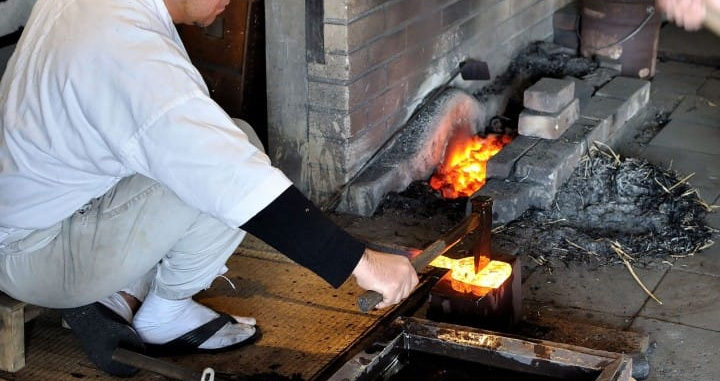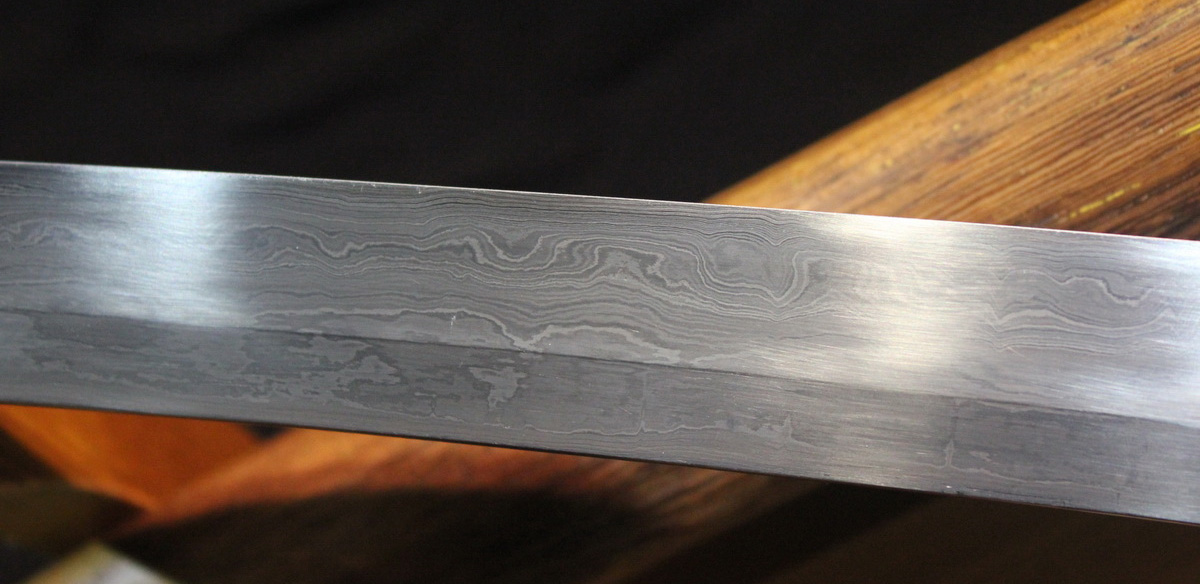Why the japanese sword is folded during production

Forging a traditional Japanese sword is a methodical process that takes several days to complete.
The sword-making process begins with the manufacture of steel in a large melting furnace that mixes wrought iron and pig iron. The steel is then separated according to its carbon content, with low carbon steel used for the core of the blade and high carbon steel for the outside of the blade.
After manufacturing and separating the steel, the swordsmith began to heat, hammer, and fold it. The process of folding steel used in Japanese swordsmanship is called shita-kitae. The swordsman will perform shita-kitae up to 10 times, creating up to a thousand individual layers.
Folded steel sounds impractical and unnecessary. After all, what benefits does folding steel really provide? Of course, it can't improve the quality of the sword, right? Well, traditional Japanese swordsmanship involves folding steel for several reasons. Before getting into the details, it is important to remember that the quality of steel used to be very poor and the blacksmith needs to figure out a way to deal with it.
Alternating hardened layer
By folding the steel, the swordsman can achieve alternating layers of different hardenability. The metal will be quenched with oil or water between the folds; therefore, a stronger metal is promoted. Compared with the low- and medium-carbon layer, the high-carbon layer becomes extremely strong.
Remove impurities

Another reason the Japanese sword is made of folded steel is that it helps to eliminate any impurities in the metal. If a batch of steel contains a lot of impurities, it is likely to have a negative impact on the quality and strength of the sword. Impurities often lead to "weaknesses" on the sword-this problem is usually avoided by shita-kitae.
Homogenization
The most significant benefit of folding steel used in sword making is that it can homogenize the metal. Elements such as carbon are commonly found in steel. If a large amount of carbon is deposited in certain areas of the steel, it will make the blade brittle and brittle. However, the swordsman found that due to homogenization, multiple folding and hardening of the steel produced stronger blades. The carbon deposits in the steel are evenly distributed throughout the steel, reducing the risk of weak spots.
Folded pattern

Last but not least, the folded steel used in Japanese swordsmanship helps to create its unique pattern texture. Although aesthetic in nature, swordsmen pride themselves on their ability to create unique patterned particles. Shita-kitae is the key stage in the formation of these patterns.
Discover the many attractive options available for Katana swords and custom swords.
Want a unique sword? Feel free to contact us:
Phone: 086 13739276006
Email: [email protected]
Website: www.hanbonforge.com
Custom Sword Page: www.hanbonforge.com/CUSTOM-SWORDS/Custom-Your-Own-Swords

1 Comment(s)
It sure was interesting when you said that a unique pattern texture is created in Japanese swordsmanship through the folded steel. This reminds me of my nephew who is interested in attending a Japanese swordsmanship course starting next week. He wants to learn the skills of using Japanese swords, so it will be fun to share your blog with him.
Leave a Comment